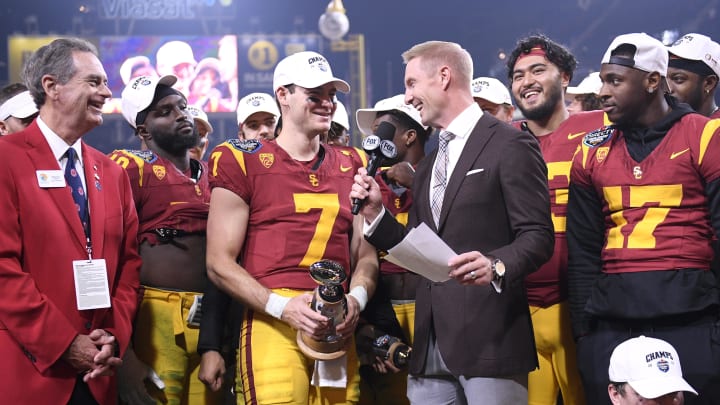New California Law Will Mandate Public Disclosure of NIL Payments

California is one Gavin Newsom signature away from enacting first-of-its-kind NIL legislation. Senate Bill 906 is the brainchild of Nancy Skinner and the newest evolution of California NIL regulations. Most notably, the bill aims to implement the most progressive transparency measures for collegiate athletics, requiring institutions to report NIL earnings by gender and sport. This bill heavily targets NIL Collectives and aims to unveil the mystery of NIL payments to the general public.
While the bill’s disclosure requirements will paint a solid picture of athlete compensation, sports fans will not receive the oft-requested exact NIL compensation for their favorite players, such as seen with professional athletes. No names or other personally identifying information will be made public.
Only entities that provide $5,000 or more to a student-athlete will have to disclose the financial details of the partnership. According to SB906, public disclosure will feature:
(i) The amount of compensation or the value of the item or service provided to the student athlete or the student athlete’s immediate family.
(ii) The athletic team for which the student athlete currently plays or the team for which it is anticipated the student athlete will play, including whether the team is a men’s team, women’s team, or mixed-gender team.
(iii) The total amount of compensation and the value of the items and services provided to all student athletes at the postsecondary educational institution each academic year disaggregated by athletic sport and gender of the team.
Most low-profile NIL engagements will not reach this threshold and will not require brands or other entities to disclose the engagements to the athlete's respective universities. Once again, this bill looks to target NIL collectives, the third-party NIL entity schools utilize to provide athletes with contracts tethered to athletic performance rather than influencer value. The language of this new bill will also implicate large brand deals.
For the first time, fans of California schools will be able to see exactly how healthy their NIL situation is compared to their in-state rivals. Prospective athletes will benefit from this new bill, as they can now directly see the robustness of any California school’s NIL endowment when choosing a program. Massive football and men’s basketball programs at schools like USC, UCLA, San Diego State, Stanford, Cal, and Saint Mary’s will all signal NIL strength to their recruits, whether they want to or not.
However, the bill was not created with the benefit of the revenue-student athlete or the fan in mind. State Senator Skinner outlined that gender inequity in NIL payment is at the core of these proposed changes. According to industry estimates, roughly 95% of collective funding goes towards male athletes. Football and men’s basketball dominate athletic payments from NIL collectives, as boosters and university fan bases fund NIL collective payments and have discretion over what programs and athletes their money benefits. Often, the big-money men’s sports have the greatest investment from alumni.
NIL collectives are a separate legal entity from the universities they support and operate outside of Title IX regulations that entitle male and female athletes to equal resources. While this bill does not directly provide regulations to promote gender equity, Skinner has told the San Francisco Chronicle that “Hopefully, the transparency measures in SB906 will prompt collectives and other NIL entities to do the right thing and boost funding for women athletes” and if they do not change in response to SB 906 “policymakers will have the information necessary to level the playing field.”
Beyond third-party NIL payment, the new bill also requires institutions to disclose two separate NIL expenditures: institutional NIL resource allocation and future NIL-revenue sharing (which could come as early as Fall 2025). Both categories will similarly be broken down by sport and gender. Unlike third-party NIL restrictions, these categories are likely subject to Title IX scrutiny, and increased transparency measures are expected to further ensure university compliance.
